#star wars archaeology
Text
Essay Structure for Star Wars Archaeology
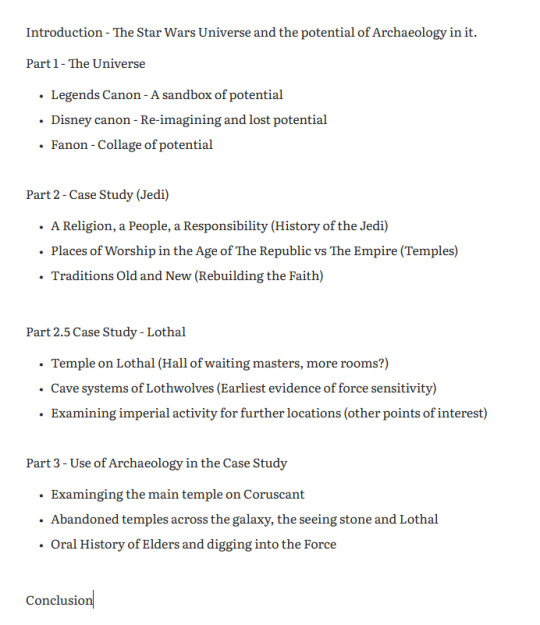
Inspired by a conversation I had a few weeks ago at a seminar in Lejre Sagnlandet about the potential of Prehistoric Archaeology in the star wars universe
#star wars#sw rebels#jedi#sw jedi#star wars jedi#sw lothal#lothal#star wars lothal#star wars archaeology#archaeology#mun writes#mun essays
15 notes
·
View notes
Link
Chapters: 1/?
Fandom: Star Wars - All Media Types, Star Wars: The Clone Wars (2008) - All Media Types, Star Wars Prequel Trilogy
Rating: Teen And Up Audiences
Warnings: No Archive Warnings Apply
Characters: Original Jedi Character(s) (Star Wars), Original Characters, Original Non-Binary Character
Additional Tags: Planet Jakku (Star Wars), Archaeology, Pre-Order 66 (Star Wars), Graphic Description of Corpses, Claustrophobia, Grave Robbers
Summary:
A Jedi cast out from the order stumbles across an ancient tomb leading them to uncover secrets of the force. In the last days of the Clone Wars, will they discover the power to save the Jedi from the inevitable?
#star wars#star wars the clone wars#star wars fanfiction#star wars the clone wars fanfiction#star wars prequels#star wars prequels fanfiction#fanfiction#archaeology#star wars archaeology#own character#archive of our own
0 notes
Text
Ach-To and Irish Archaeology
The sequels were my entry into Star Wars and I never would have gone to see The Force Awakens if I wasn't an archaeology nerd.
During the production of Episode VII, a decent number of people with an interest in our archaeological heritage here in Ireland were quite worried about the impact of filming on one of our only two UNESCO World Heritage Sites, the island known as Skellig Michael down off the coast of Kerry.
I went to the film to see if any potential damage was worth it, or if they'd do something unspeakably stupid with it in-universe. I wanted to see if it was respected.
And holy hell I was NOT disappointed. I think I walked out of TFA sniffling to myself about how beautiful the Skellig looked and how it seemed like its use as a location was not just respectful but heavily inspired by its real history.
See, Skellig Michael was a monastic hermitage established at a point when Christianity was so new that the man who ordered its founding sometime in the first century CE was himself ordained by the Apostle Paul. The fellah from the Bible who harassed all and sundry with his letters, THAT Apostle Paul. This is how old a Christian site the Skellig is. It predates St. Patrick by at the very least two hundred years.
The steps we watch Rey climb were originally cut NEARLY TWO THOUSAND YEARS AGO. They have been reworked and repaired many many times since, of course. Still, the path the camera follows Daisy Ridley up is as much an ancient path built by the founders of a faith in real life as it is in the movies.
A hermitage was a place where monks went to live lives of solitude and asceticism so as better to achieve wisdom. The practice is common to many of the major world religions, including the myriad East Asian faiths which inspired the fictional Jedi.
It is said that the hermitage and monastery were originally built with the purpose of housing mystical texts belonging to the Essanes, one of the sects of Second Temple Judaism which influenced some of the doctrines of Christianity. They also, according to what I have read, characterised good and evil as 'light' and 'darkness' and were celibate.
As such, the use of the island in TFA and TLJ does not merely respect Skellig Michael's history, it honours it. It is framed as somewhere ancient and sacred, which it is. It is framed as a place where a mystic goes to live on his own surrounded by nature that is at once punishing and sublime, which of course it was. It shown to be a place established to protect texts written at the establishment of a faith, which it may well have been.
This level of genuine respect for my cultural heritage by Rian Johnson in particular is astonishing. I don't think anyone from outside the US ever really trusts Americans not to treat our built history like it's Disneyland. Much of the incorporation of the Skellig's real past into a fictional galactic history occurs in TLJ, which is why I'm giving Rian so much credit.
It's Luke's death scene which makes the honouring of Irish archaeological history most apparent though.
Johnson takes the archaeological iconography back a further three thousand years for his final tribute to my culture's beautiful historical temples. This time, he incorporates neolithic passage tomb imagery, specifically that of Newgrange, which is up the country from the Skellig.
I think if you understand what the image represents then it makes a deeply emotional scene even more resonant.
The scene I'm referring to is Luke's death.
As he looks to the horizon, to the suns, we view him from the interior of the First Jedi Temple. The sunset aligns with the passageway into the ancient sanctuary, illuminating it as he becomes one with the Force.

As for Newgrange, every year during the Winter Solstice it aligns with the sunrise. The coldest, darkest, wettest, most miserable time of the year on a North Atlantic island where it is often cold, wet, and miserable even in the summer. And the sun comes up even then, and on a cloudless morning a beam of sunlight travels down the corridor and illuminates the chamber inside the mound.
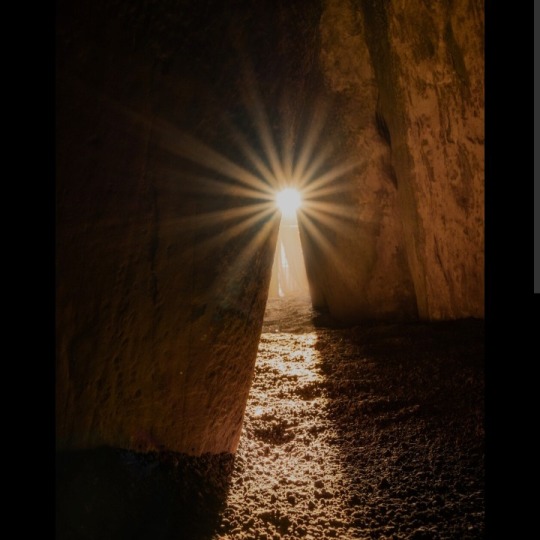
You guys can see this, right? The similarity of the images? The line of light on the floor?
Luke's death scene is beautiful but I think it's a thousand times more moving with this visual context. Luke's sequel arc isn't merely populated by a lore and iconography that honour the place where the end of his story was filmed, I think that incorporation of that history and mythology honours Luke.
We don't know for sure what the Neolithic people believed, religion-wise. We know next to nothing about their rituals. We know that there were ashes laid to rest at Newgrange. There is some speculation that the idea was that the sun coming into the place that kept those ashes brought the spirits of those deceased people over to the other side.
It's also almost impossible not to interpret the sunlight coming into Newgrange as an extraordinary expression of hope. If you know this climate, at this latitude, you know how horrible the winter is. We don't even have the benefit of crispy-snowwy sunlit days. It's grey and it's dark and it's often wet. And every single year the earth tilts back and the days get long again.
The cycle ends and begins again. Death and rebirth. And hope, like the sun, which though unseen will always return. And so we make it through the winter, and through the night.
As it transpired the worries about the impact of the Star Wars Sequels upon Skellig Michael were unfounded. There was no damage caused that visitors wouldn't have also caused. There also wasn't a large uptick in people wanting to visit because of its status as a SW location, in part I think because the sequels just aren't that beloved.
But they're beloved to me, in no small part because of the way they treated a built heritage very dear to my heart. I think they deserve respect for that at the least.
#star wars meta#ach-to#irish history#Irish Archaeology#first jedi temple#skellig michael#newgrange#luke skywalker#the last jedi#early christianity#neolithic#historical parallels in star wars#star wars and history#star wars and mythology#star wars and archaeology
128 notes
·
View notes
Text
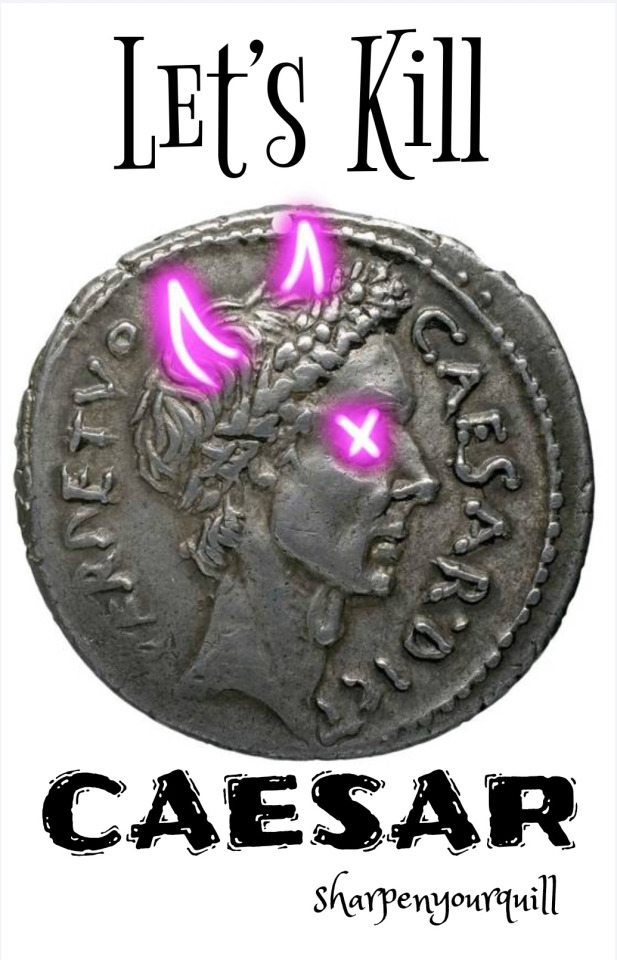
Yes. Ancient history friends - read this. It’s a book about the crazy shit in the Roman Republic… if the republic was today. And it’s a political train wreck ✨
#ancient history#ancient rome#roman republic#roman empire#archaeology#book recommendations#book reccs#history#historical fiction#historical fantasy#alternate history#new adult books#new books#fantasy books#urban fantasy#lord of the rings#star wars#acotar#game of thrones#throne of glass#percy jackson#pjo#pjo hoo toa#wattpad#writing wip#writblr#female writers#writerscommunity#authors#author
21 notes
·
View notes
Text

Into the Core Worlds [Adventure Journal 07]
12 notes
·
View notes
Text
Cienie’s take on Mandalorian Culture: Kad Ha’rangir and mandalorian traditional weapons, p.3
part 1 --- part 2
In contrast to previous sources that with no doubt tried synthesizing Legends with The Clone Wars lore, the Collapse of the Republic Roleplaying Sourcebook (2019) seems to be written first and foremost with New Canon in mind, at least in regard to Mandalorian culture. While understandably a main focus was put on the conflict between New Mandalorians (pacifists) and Death Watch (traditionalists) just before and during Clone Wars, the history of Mandalorians was presented there in a general, not really detailed way - the Mandalorians were warriors for generations and that is basically the summary.
The two vital data about Mandalorian weapons are:
the importance of Darksaber (a sword not exactly needed to lead Mandalorians, but an important heirloom of Vizsla clan and cultural item nonetheless)
the traditional swords made out of Mandalorian iron are known as beskads and their shape was based on ancient Taung design.

The second point is especially interesting because the visible lack of connection to “ancient time” lore makes the mention of Taung a surprising addition. As I do not have any insight into legal restrictions or demands put on authors, I can only speculate if the authors of this Rulebook couldn’t refer openly to Legends sources which is why this small callback is sneaked into the text without a proper context? Whatever the truth is, Bounty Hunter Code already had similar information, and the same as with the older source, I do not think Collapse of the Republic contradicts what original The Sith War comics presented.
Logically thinking, the metallurgist knowledge needed to be passed down from Taungs to humans and other assimilated Aliens before the original Mandalorians died out. The existence of Mandalorian traditional sword design however is not exactly the same as direct proof the said swords had any real religious importance in their culture. Even more, the lack of proper context who Taungs actually were for (human) Mandalorians raises a question, did Sourcebook mean ancient Taung as the pre-Mandalorian (Roon) culture or indication for original Mandalorian era? Because there is possibility that modern warriors based their beskads on archaeological findings from burial sites on Roon or alternatively, Taung!Mandalorians forged swords in the manner their own forefathers did before Mandalore was colonized. And so we come back to burial sites mentioned in Author’s Cut and a religious/cultural aspect of swords that may or may not survive to the Sith and Mandalorians Wars era. Similarly, we can’t cross out the possibility that Taung metallurgist created swords either for export[5], as gifts and/or sacred items or as equipment for their (non-Taung) vassals before those were acknowledged as equal to warriors and maybe even for Neo-Crusaders who in great numbers came from Republic (thus may be more familiar with sword fighting than more typical Mandalorian axes).
The same as Death Watch Manifesto, "Collapse of the Republic" puts a great importance on the modern conflict over mandalorian “national” identity; however in contrast to the earlier source, the provided knowledge is pretty much separated from warriors’ ancient (alien) origin and it does not even clarify which Taung design - of Roon or Mandalorian culture - it refers and this detail makes a great difference.
Another source worth to examine is one of Mandalorian songs - “Vode An” (meaning: Brothers All), the best known from Republic Commando Game Soundtrack. Years ago, Lucasart.com published the ancient Mandalorian text and English translation of chants used in the game - for those interested, an archived version is still available.
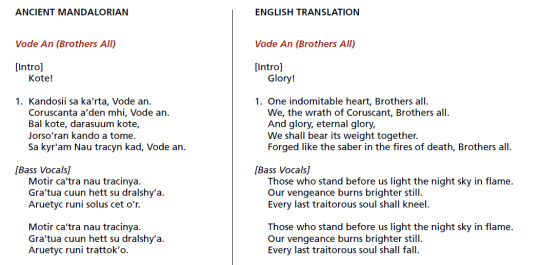
Part of this song, although not specified by name, was also included in Republic Commando: Hard Contact as a little in-universe snippet added to chapter 7:
Bal kote, darasuum kote, Jorso ‘ran kando a tome. Sa kyr 'am Nau tracyn kad, Vode an.
(And glory, eternal glory, We shall bear its weight together. Forged like the saber in the fires of death, Brothers all.) ”
— Traditional Mandalorian war chant
Republic Commando: Triple Zero’s glossary calls the same song as “ancient Mandalorian war chant”.
Both Republic Commando game’s tie-in sources and book series note the old origin of the song and its traditional aspect. On the first glance, it is easy to assume this war chant could be created by Taung!Mandalorians and thus be a proof of swords' importance or presence in the pre-human culture era, especially if used as poetic metaphor. However we need to take two things into account:
First, as I mentioned before, with a culture that has existed for over 7,000 years the term “traditional” may easily refer to various stages of Mandalorian history. If we look closely at the all presented songs, Vode An share a lot similarities - if not the same lines - with other pieces, like:
Bal kote, darasuum kote (And Glory, Eternal Glory) with the first line of “Kote Darasuum” (the difference is addition of “and” in Vode An)
Motir ca’tra nau tracinya // Gra’tua cuun hett su dralshy’a // Aruetyc runi solus cet o’r. (Those who stand before us light the night sky in flame // Our vengeance burns brighter still // Every last traitorous soul shall knee) share the same lyrics with
🔶"Rage of the Shadow Warriors" (later officially named Dha Werda Verda):
Duum motir ca’tra nau tracinya // Gra’tua cuun hett su dralshy’a (Let all those who stand before us light the night sky in flame // Our vengeance burns brighter still.)
🔶 "Gra’tua Cuun":
Motir ca’tra nau tracinya // Gra’tua cuun hett su dralshy’a // Aruetyc runi solus cet o’r prudii an. (Those who stand before us light the night sky in flame // Our vengeance burns brighter still // Every last traitorous soul shall kneel in our shadow.)
From the perspective of making music for a Republic Commando Game - and to my understanding, the lyrics were first created by Jesse Harlin and later official mandalorian language came to life thanks to Karen Traviss and her book series - it makes sense that all songs have the same lyric “core”. However, from the perspective of in-universe culture, the similarity either implies a very limited creativity (artistic needs) of Mandalorians or those songs drew inspiration from the same source but themselves may not be created in the same era. Alternatively, one of them is the original version that inspired the later variants who naturally differ from each other due to isolation and cultural (clan) differences, as Mandalorians lived in various enclaves across the galaxy and clans did not always reside in close proximity to each other. Another possibility is that some of the presented chants were adopted by Mandalorian groups as their specific symbols, similarly as happened with clone troopers using Vode An as their army’s anthem and Kote Darasuum as their motto[6].
Frankly, from the all named songs, only for Rage of the Shadow Warriors - in later sources known also as Dha Werda Verda - we have premises to assign it to a specific era. Star Wars: The Essential Guide to Warfare Author's Cut, Part 2 - Ancient Coruscant places its origin to regime of Mandalorian the Ultimate and its role as a plea of dying out Taung species to be remembered by new, non-Taung Mandalorians:
Hu Jibwe, scholar of military history at the Salmagodro Grand Academy, notes that there is another song popularly known as “Dha Werda Verda” -- the Mando’a war chant known as “Rage of the Shadow Warriors.” During the Clone Wars, some Mandalorian trainers taught this chant to their clones, and it became a hallmark of those units. It’s rarely performed today, so if you have a chance to see it, take advantage: The chant and ritual dance are mesmerizing, particularly if the dancers follow Mandalorian tradition and drum out the rhythm on the chest or back of those next to them:
The ash of the Taung beats strong within the Mandalorians' heart.
We are the rage of the Warriors of the Shadow,
The first noble sons of Mandalore.
Let all those who stand before us light the night sky in flame.
Our vengeance burns brighter still.
The gauntlet of Mandalore strikes without mercy.
We are the rage of the Warriors of the Shadow,
The first noble sons of Mandalore.
Let all those who stand before us light the night sky in flame.
Our vengeance burns brighter still.
But as Hu notes, “Rage” is far more recent than Dha Werda Verda. The best-preserved record of the Taung epic poem, written in Notron Cant and housed in the Baobab Archives on distant Manda, contains none of the verses of “Rage.”
“It’s my belief that ‘Rage of the Shadow Warriors’ dates from the reign of Mandalore the Ultimate, when the Taungs knew they were being eclipsed,” Hu explains. “I’ve always thought it a poignant work -- a plea that the Taungs not be forgotten by the newborn culture they knew would outlive them.”
Mind you, this is just (in-universe) researcher’s opinion and the man may be wrong about the song's true purpose as this is only his academic assumption. However the mention of differences between the epic poem and the chant is a strong indication that the song was created much later[7]. Interestingly, Rage of the Shadow Warriors, if truly composed by Taungs in the period of (pre?) Mandalorian Wars, does not use a metaphor of “forged like the saber” while at the same time is the longest and most complex piece. Looking at the similar lyrics between Rage of the Shadow Warriors, Gra’tua Cuun and Vode An, one may wonder if the “saber” part wasn’t added in human!Mandalorians era where such a type of edged weapon became much more popular.
Another thing worth considering is the periodization of Mandalorian culture. More precisely what in-universe researchers and Mandalorian people themselves describe as ancient times? This is a very important question as sources often use “ancient” and “traditional” interchangeably yet those two terms are not the same and may indicate different meanings (the word ancient itself is more chronology based, the traditional - culturally). Secondly, our idea of an “ancient” and “modern” era in a technologically advanced galaxy far far away may be misleading because really, at which point antiquity officially ends? The best example for this problem is Darksaber itself.
The Armorer and Fenn Rau claimed Tarre Vizsla created this one of kind lightsaber around one thousand years ago which is of course impressive amount of time, but also a relative small part of overall long Mandalorian history (and even longer culture if we take into account the whole record of Taung species). And yet starwars.com’s databank still calls this item “An ancient lightsaber that serves as a powerful symbol of leadership to the Mandalorians”.
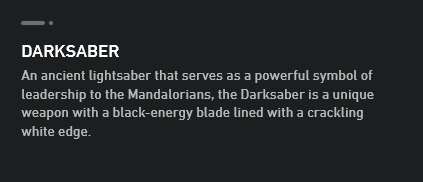
In Legends, one thousand years before the events of the Original Trilogy, the Republic and Jedi Order went through a great reconstruction known as the Ruusan Reformation that started the Republic Golden Age. Maybe the New Canon too uses similar periodization or its antiquity ended at a different, much later time?
Even if we narrow down the mandalorian antiquity from The Sith & Mandalorians Wars era to creating Darksaber, it is still three thousand years - a great period of time to which the term “ancient” will refer to. Which of course does not help to examine source material, especially related to traditional songs and items passed down from one generation to another for centuries.
So, how important were swords in Mandalorian culture and how does this weapon relate to Kad Ha’rangir?
Next part: Final conclusions and potential explanations of the problem.
SIDENOTES:
[5] In Tales of the Jedi: Dark Lords of the Sith #2 (1994) - a year before the TotJ comic series even introduced us to Taung!Mandalorians - for the first time Mandalorian iron is presented as a material that can withstand even a lightsaber cut.��


Master Jedi Arca Jeth used Mandalorian iron to secure a Sith tomb of Freedon Nadd, build in 3998 BBY on Dxun, Onderon’s dangerous moon (Uprising of Freedon Nadd #2) . The duel of Ulic Qel-Droma and Mandalore the Indomitable happened in 3996 BBY (The Sith War #1) and Mandalorians up to this point weren’t well known force within Republic border - they did conquered many worlds and their attention at some point was focused on Teta Empress and similar strong regions of this galaxy, yet for example Exar Kun - who in general was knowledge seeker - had literally no idea what the tomb was made of to whistand lightsaber which suggest Mandalorian Iron wasn’t worldwide known yet. This of course raise a question then how Master Jedi Arca Jeth even get his hands on such precious material - something rather hard to get by different means than from Mandalorians themselves, as:
A) beskar is found only in Mandalorian system
B) without a proper metallurgist knowledge beskar won’t be indurable
C) sources like Bounty Hunter Code states betraying the secrets of beskar and mandalorian metallurgist technique is punished by death and of course, this could be more modern nuance (especially when facing extermination of warrior culture) but definitely beskar had a special place in Mandalorian culture.
Sadly, the issue of Master Arca using Mandalorian iron is, as far as I know, unresolved.
[6] The Guide to Great Army of Republic (Insider 84) states:
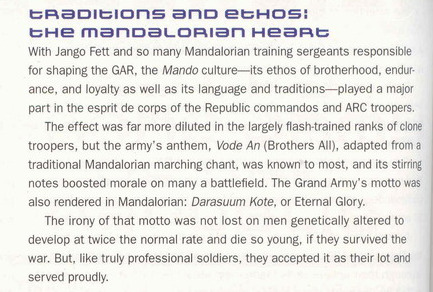
[7] The use of the word “Mandalore” also supports the theory that the song Rage of the Shadow Warriors is a much later creation than epic poem. The version known and used by clones (as presented in Republic Commando game) has changed the original line to “Coruscanta kandosii adu.”, as reference to the capital of the Republic. This raises question though, if “forged like the saber” could be also changed from original into something more familiar and Republic/Jedi alike?
#star wars#mandalorian culture#cienie's take on mandalorian culture#mandalorians#mandalorian songs#uff i'm almost done#and a bit shorter part compared to the previous ones lol#anyway I DEMAND DO KNOW HOW IN-UNIVERSE LOOKS PERIODIZATION OF MANDALORIAN CULTURE#is pre-The Sith War era considered ancient time or prehistoric due to limited written / material sources???#the reason i think modern (human) mandalorian could use archaeological findings is the feeling that with warrior culture being destroyed#on purpose they could try to look for their ancient roots for propaganda and ya know culture that lasted for more than 7000 years#sounds better than pacifism that lasted max 700 years#anyway i have few pages of conclusions and theories to present lol
12 notes
·
View notes
Text
Finished the Mandalorian season 3 yesterday pondering similarities between the depiction of Mandalorian society and the Spartan mirage

Have people discussed this, and I've just missed it? From visuals to culture, there are lots of parallels
Prepping a YouTube video about this for next week or so.
8 notes
·
View notes
Text
Hunter’s reaction to Cid coming along to Pabu and threatening the batch (she doesn’t know he’s got a blaster in his back pocket)
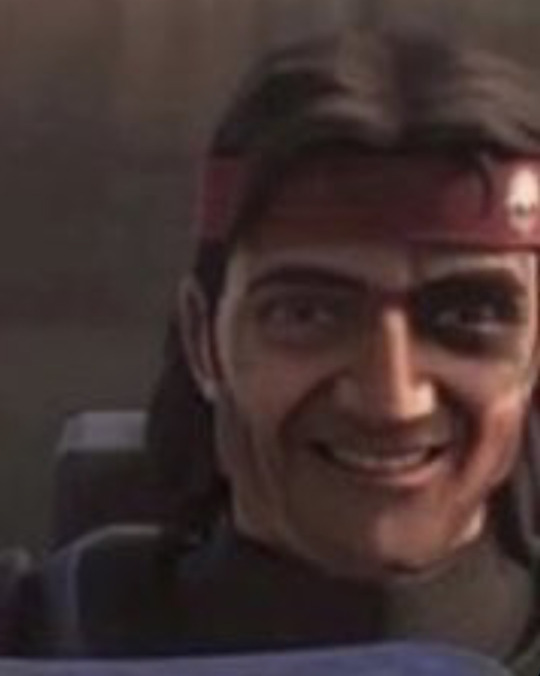
#Honest reaction to that information#Meanwhile Tech and Phee are having a date that’s just talking about more space archaeology#star wars#tbb#the bad batch#tbb s2#the bad batch s2#tbb s2 spoilers#the bad batch season 2#tbb hunter#star wars tbb#sw tbb#tbb spoilers
19 notes
·
View notes
Text
#celebrities#writers#museums#developers & startups#india#islamic#elden ring invasions#invasion secreta#history#world history#culture#archaeology#star wars#history of india#mahmud asrar
2 notes
·
View notes
Photo

“I don't have the right words to tell you how much I love you.“
my art @dameronspect.
#star wars#Poe dameron#Poe x selfinsert#star wars selfinsert#star wars oc#illustration#doodle#art#my art#Poe Dameron x y/n#star wars x y/n#digital archaeology#paint tool sai
7 notes
·
View notes
Text
On the second day of our Tatooine camping trip, I took the Scout Troopers to the Dune Sea where they earned their Archaeology badges by carefully digging up a krayt dragon skeleton we found half-buried in the sand.
Then, they earned another Archaeology badge when a sandstorm hit and completely re-covered the skeleton, so they had to dig it up a second time.
#ST-3V3#star wars#sequel trilogy#stormtrooper#scout troopers#tatooine#camping#krayt dragon#archaeology#badge
2 notes
·
View notes
Text
Whoops. Trying to watch some cool videos about biblical archaeology while I draw and this one's about the canaanites. And he keeps saying Canaan and I'm like 'Kanan o: ?'
#its weird#and in these videos there are also mentions of historical people named e#ezra and ephraim and such and every time i kinda go Oh! its weird#im just watching it in the background so my brain grabs at familiar names like hey! stop it!#[obligatory mention that biblical archaeology as in the actual archaeological evidence of the history around the cultures#mentioned in the bible and such. not the bullshit psuedo archaeology stuff. im not christian or anything i just find this stuff neat]
1 note
·
View note
Text
youtube
#HELLO#welcome home#my writing#action#succession#culture#the mandalorian#ted lasso#super mario#taylor swift#archaeology#women in history#across the spiderverse#history tag#star wars#oh my god#goddess#godzilla#godkabir#jesus#christ#jesus christ#faith#lord#supergirl#supernatural#superhero#superman#step#jump
1 note
·
View note
Text
(The War With The Romans) Prophet Informed About The Battle Of The Sea Near Cyprus And How His Future Predictions All Came True

He (P.B.U.H.) Informed About The Battle On Sea Near Cyprus And The War With The Romans
Imam Al-Bukhari And Imam Muslim Relate That Anas Ibn Malik (R.A.) Said:
The Prophet (P.B.U.H.) Used To Visit Umm Haraam Bint Mulhan, (The Prophet Was Her Mahram) Who
Used To Feed Him And Rid Of Lice From His Hair.
That Day The Prophet (P.B.U.H.) Visited Her, She Fed Him And Started Ridding Of Lice From His Hair, Then He Fell Asleep. He (P.B.U.H.) Woke Up Laughing.
She Said: I Asked Him: What Makes You Laugh.
He (P.B.U.H.) Said:
“People From My Ummah Fought In Jihad Sailing In The Sea Of Al-Muluk (Mediterranean) Victoriously”.
She Said:
O The Messenger (P.B.U.H.) Of Allah, Pray To Allah That I Be Among Them.
He Prayed For Her Then Laid His Head And Slept.
He (P.B.U.H.) Woke Up Laughing Again.
She Asked Him:
What Makes You Laugh?
He Said:
A Group Of My People Fought In Jihad.
She Said:
O The Messenger (P.B.U.H.) Of Allah, Pray To Allah That I Be Among Them.
He Said:
“You Would Be Among The First Ones”.
It Occurred During The Time( When Mua’wiyah Was The Commander Of The Islamic Navy During
The Caliphate Of Uthman) Of Mua’wiyah Ibn Abu Sufyan, She And Her Husband Ubadah Ibn Swamit Were Among Those Who Fought Together With Mua’wiyah In The Sea.
She Later Died From A Horse Fall After Coming Back From The Sea.
Imam Al-Bukhari Relates That Umm Haraam Heard The Prophet Say That:
“The First Army From My Ummah To Fight On Sea Have Been Forgiven”
There Are Three Evidences Of Prophethood
1 Battle Of The Sea
It Occurred During The Caliphate Of Uthman Ibn A Fan, In The Year 27 Hijrah Under The Command Of Mua’wiyah. Who Was The Governor Of Sham.
2 Battle Of Constantinople
It Occurred During The Caliphate Of Mua’wiyah Ibn Abu Sufyan In The Year 52 Hijrah And Together With Abu Ayub And Khalid Ibn Zaid Who Died There. Umm Haraam Was Not With Them Because She Died Before The Battle.

3 He Informed Of The Conquest Of India.
Imam Ahmad Relates That Abu Huraira (R.A.) Said:
The Prophet (P.B.U.H.) Said To Me:
“My People Will Conquer Sind And India”.
The Muslims Fought In India During The Time Of Mua’wiyah In The Year 44 Hijri… They Fought King Al-Jahiil Mahmud Ibn Sabaktakin The Owner Of The Highland, Which Is Four Hundred Miles From The Border With India.
The Muslims Fought And Captured India And Entered The Land Of Al-Somaniyat(A Sect In India That Believes In Incarnation) Broke Their Idols, Which They Were Worshipping And Returned Safely And Victoriously.
The Glad Tidings For Abdallah Ibn Salam
Imam Muslim Relates That Khurshah Ibn AlHur Said:
I Was Seated In The Mosque Of Medina With A Group Of Students Listening To A Sheikh.
The Sheikh Was Abdullah Ibn Salaam (R.A.).
When Abdallah Stood Up, People Said:
Anyone Who Would Like To See A Man Among The People Of Paradise Should Look At Him. I Swear… I Followed Him Until We Were Almost Going Out Of Medinah And Entered His House.
I Requested Permission To Enter And He Welcomed Me.
He Said:
What Do You Need Son Of My Brother?
I Said:
I Heard People Talking About You Saying That You Are Among The People Of Paradise… So I
Just Want To Be With You.
He Said:
Allah Knows Best About The People Of Paradise, I Will Tell You About What They Say.
One Day When I Was Asleep, A Man Came And Told Wake Me Up. Took Me By His Hands And We Started Walking Suddenly We Were At Jawad A Road On The Left, He Asked Me Not To Take That Road As It Was For
The People Of The Left Side. Then There Was Another Road On My Right Hand Side Which Was Straight.
He Asked Me To Take The It, We Approached A Mountain And He Said To Me: Climb It.
I Tried But I Kept Sliding Back, I Tried Again And Again But In Vain. We Continued Moving Until We Reached A Post Who’s Bottom Is On Earth And Top In The Sky.
He Said: Climb…
I Said:
How Do I Do It While Its Top Is The Sky?
He Took Me By His Hands And Left Me Clinching By The Post. I Remained Clinching To Till Morning. When I
Woke Up, I Went To The Prophet (P.B.U.H.) And Inform Him About My Dream.
He Said:
“The Path On Your Left Is For The People Of The Left-Hand Side And The Path That Was On Your Right Is For The People Of The Right-Hand Side, The Mountain Is The Place Of The Martyrs And You Are Not Among Them, The Post Is Islam And You Will Continue Being One Till You Die”(Sahih Muslim Kitab Fadhail Al-SahabaNo.150)
Imam Al-Baihaqi Said That Abdullah Ibn Salaam Died In The Year 43 AH, Which Is Also Mentioned By Abu Ubaid
He (P.B.U.H.) Informed About The Death Of Maimunah Bint Al-Harith At Sarif
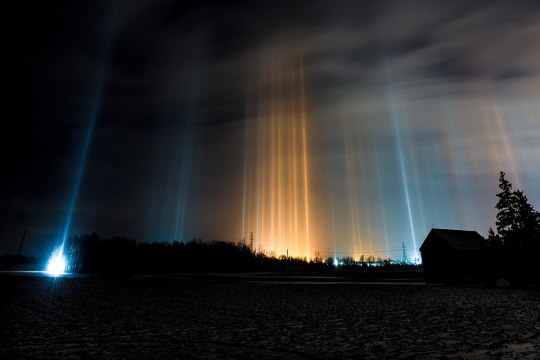
Imam Al-Bukhari Relates That Yazid Ibn AlAswam Said:
Maimunah(She Was Among The Women The Prophet (P.B.U.H.) Married.) (R.A.) Fell Sick In Mecca, Where She Had No Relatives…She Said:
I Will Not Die In Mecca.. .The Messenger Of Allah (P.B.U.H.) Informed That I Will Not Die In Mecca.
So They Carried And Brought Her To Sarif (Near Tane’em), At The Same Tree Under Which The
Prophet (P.B.U.H.) Married Her.
Thereafter She Died.
This Was On The Year 51 A.H.
After My Death There Will Be Selfishness And Egoism
Imam Al-Bukhari Relates That Ibn Mas’ud (R.A.) Said That The Prophet (P.B.U.H.) Said:
“There Will Be Selfishness And Egoism After My Death”.
The People Said:
O Messenger (P.B.U.H.) What Do You Command Us To Do?
He Said:
“Execute The Duties That Are Upon You And Ask Allah For What Is Yours”. (Sahih Al-Bukhari, Kitab: Al-Manaqib And Muslim Kitab: AlImarah No. 40)
Imam Al-Bukhari Also Relates That Abu Hurairah (R.A.) Said:
I Heard The Messenger (P.B.U.H.) Say:
“My Ummah Will Perish In The Hands Of Youth From Quraish”.
He Said:
The Youth Is Marwan!
Abu Hurairah Said:
If You Want Me To Mention Them: Bani Fulan And Banfulan(This Clan And This Clan)(Sahih Al-Bukhari, Kitab: Al-Manaqib)
He (P.B.U.H.) Informed About The Killing Of Hussein Ibn Ali
Imam Ahmad Relates That Anas Ibn Malik (R.A.) Said That The Angel Of Rain Asked To Come
To The Prophet (P.B.U.H.) And Was Allowed To Do So.
The Prophet (P.B.U.H.) Said To Umm Salamah:
“Guard The Door So That No One Enters”.
Then Came Hussein Ibn Ali, He Jumped Until He Managed To Enter, He Climbed On To The Shoulders Of The Prophet (P.B.U.H.).
The Angel Asked The Prophet (P.B.U.H.):
Do You Love Him.
The Prophet (P.B.U.H.) Said:
“Yes”.
The Angel Said:
Your Ummah Will Kill Him And If You So Wish, I Will Show You Where He Will Be Killed.
He Said:
The Angel Clapped His Hands And Showed The Prophet Red Sand.
He Said: Umm Salamah Then Took The Sand And Wrapped It In A Piece Of Cloth.
He Said: We Used Hear That He Will Be Killed At Bakrballa(Musnad Imam Ahmad Vol. 3 Pg. 260)
#battle#fight#star wars#roman reigns#ancient rome#ancient history#history#middle ages#artificial intelligence#india#architecture#archaeology#predictive astrology#predictive analytics#experts predict
0 notes
Text
Let’s Kill Caesar
A book about the antics of the Romans.
May include: romance, twitter feuds and bloodthirsty besties ✨
Also it would be cool if you checked it out 😅 it’s written by a history student who is a Pompey girlie (sorry Caesar, we don’t vibe)
#lord of the rings#lotr#star wars#acotar#throne of glass#game of thrones#history shitposting#historical fantasy#alternate history#historical fiction#ancient history#ancient rome#ancient greece#archaeology#book reccs#fantasy books#new books#book recs#book recommendations#lgbtq books#mlm books#new adult books#female author#history student#history#ya fantasy#wattpad#writing wip#writblr#writing
0 notes
Text
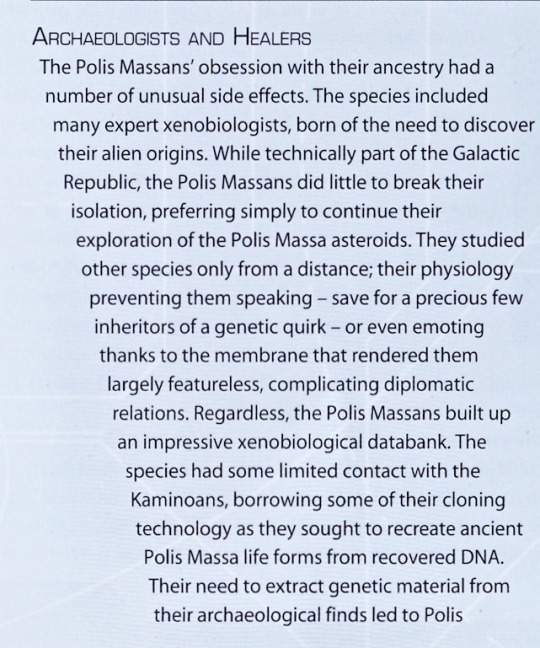

Star Wars - The Official Starships & Vehicles Collection 31 (DeAgostini)
#star wars#polis massa#alien cultures#Star Wars - The Official Starships & Vehicles Collection 31 (DeAgostini)#in universe archaeology#in universe education
5 notes
·
View notes